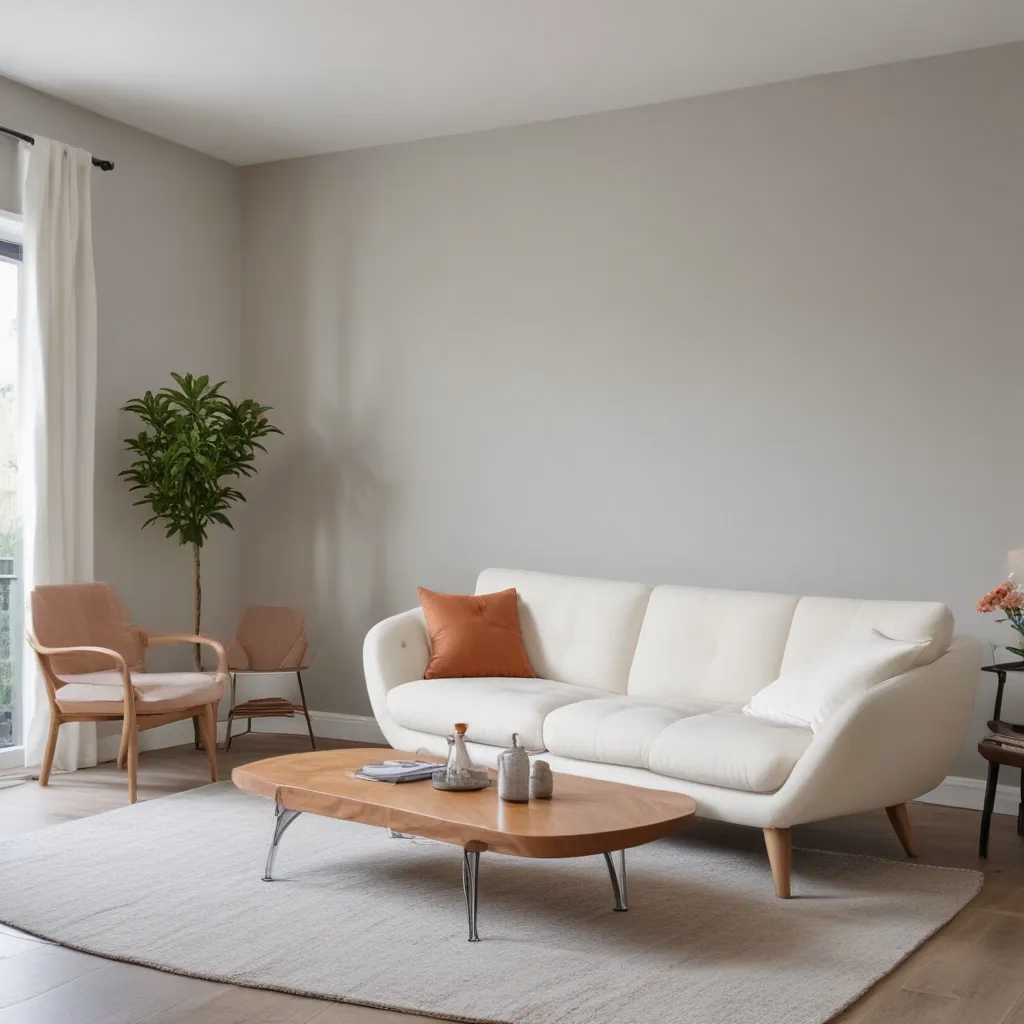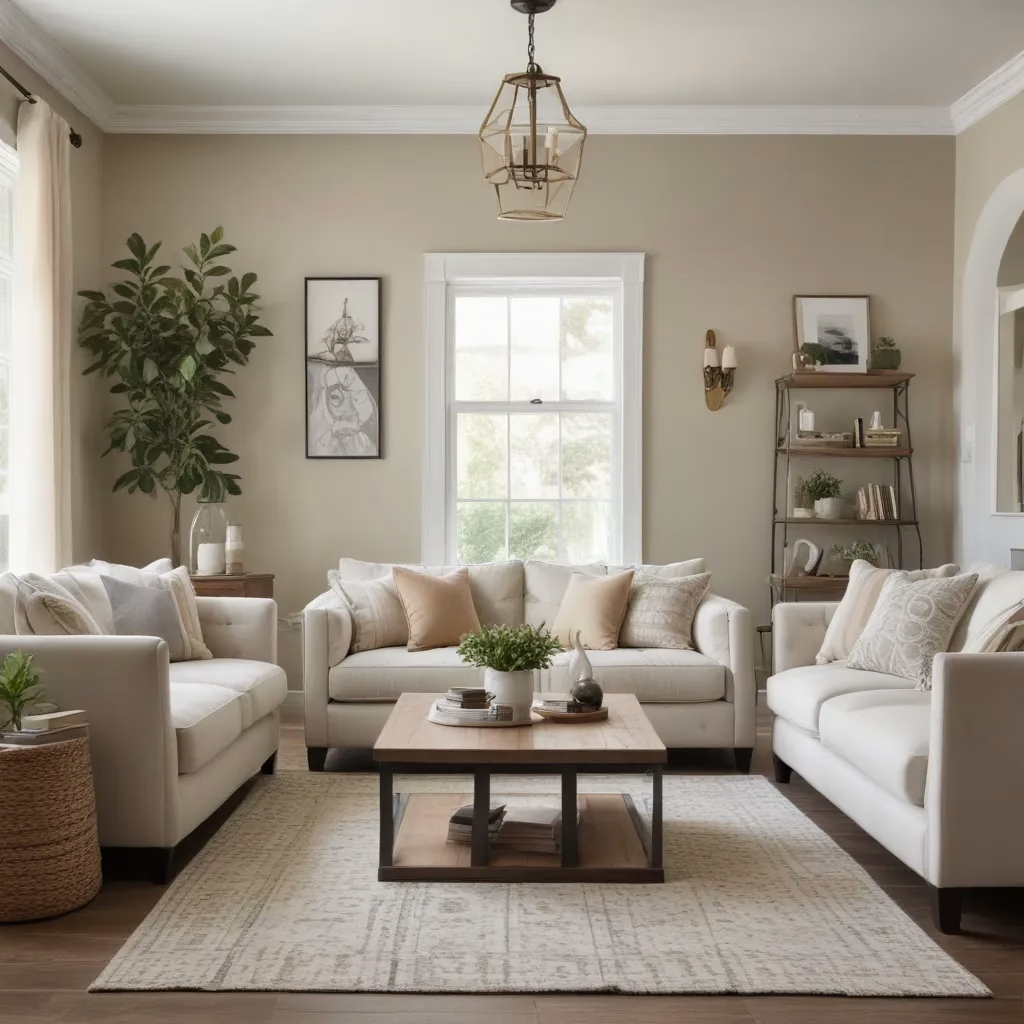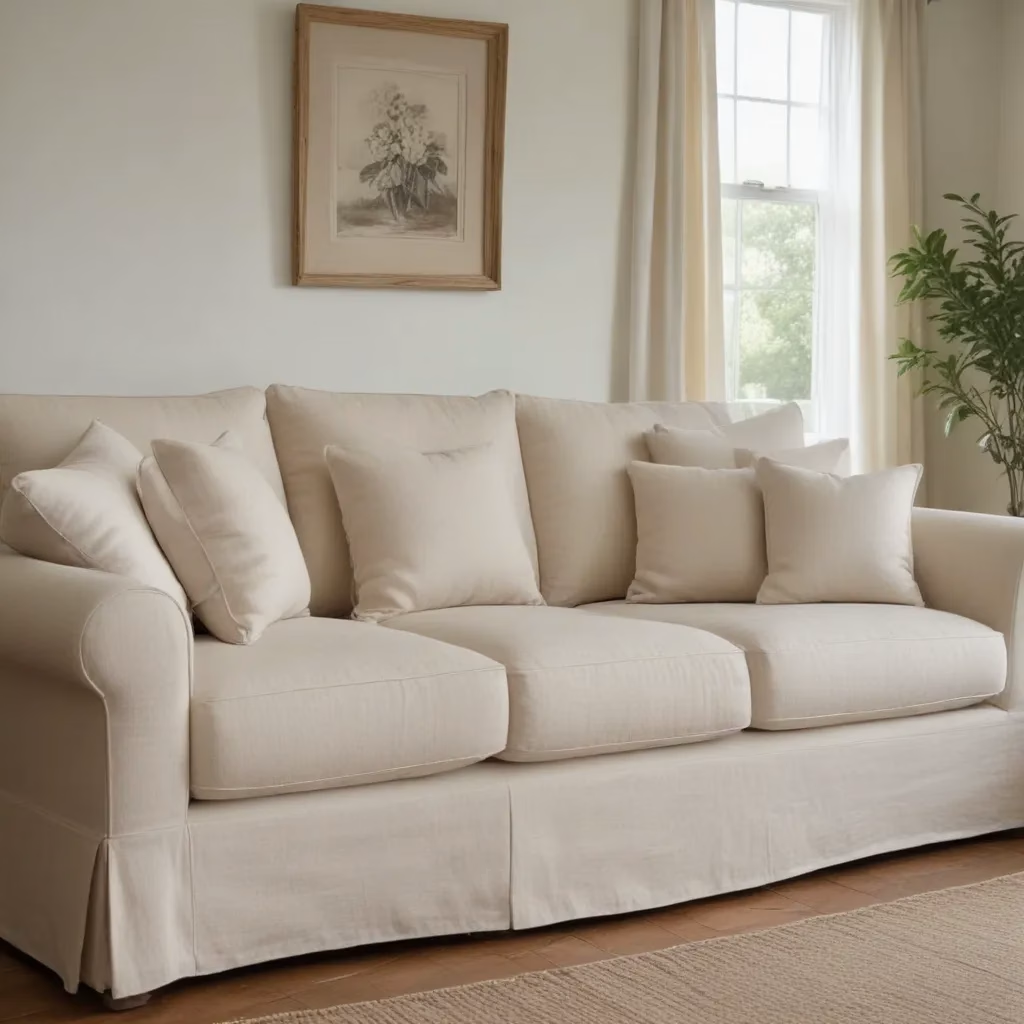
In the world of interior design, the sofa reigns supreme as the centerpiece of any living space. It’s not just a place to sit — it’s a canvas upon which we layer comfort, style, and functionality. As an experienced furniture consultant and interior design writer, I’ve seen firsthand how the perfect sofa can transform a room, elevating both its aesthetic and its livability.
Ergonomic Considerations for Sofa Design
When it comes to sofa design, comfort is king. After all, a sofa that looks stunning but fails to provide proper support can quickly become an exercise in frustration. That’s why ergonomics — the science of designing products to optimize human well-being — is so crucial in the world of upholstered furniture.
Seat Depth and Height
The seat depth and height of a sofa play a vital role in ensuring comfortable, long-term use. A seat that’s too deep can cause you to “sink in” too far, leading to poor posture and potential back strain. On the other hand, a seat that’s too shallow can leave your legs unsupported, causing discomfort over time.
Backrest Angle and Support
The angle and contouring of a sofa’s backrest are also key factors in providing comfort and support. A backrest that’s too upright can cause strain on the shoulders and neck, while one that’s too reclined can lead to poor lumbar support. Aim for a backrest angle between 100-110 degrees, with a gentle curve to follow the natural shape of the spine. Ergonomic sofas often feature built-in lumbar support to help maintain the spine’s natural curvature.
Armrest Positioning
The placement and height of a sofa’s armrests can have a significant impact on overall comfort and posture. Armrests that are too high can force your shoulders to hunch, while those that are too low won’t provide the necessary support for your arms and elbows. Ideally, armrests should be positioned at a height that allows your arms to rest naturally, with your shoulders relaxed.
Upholstery Fabric Selection
The fabric you choose for your sofa’s upholstery is more than just a decorative choice — it also plays a crucial role in the overall comfort and durability of the piece. When selecting upholstery, consider the following factors:
Durability and Wear Resistance
In high-traffic areas, such as living rooms or family rooms, you’ll want to choose a fabric that can withstand frequent use without showing signs of wear and tear. Durable fabrics like microfiber, leather, or performance-grade textiles are excellent choices for their ability to resist fading, pilling, and stains.
Texture and Visual Appeal
While durability is important, you’ll also want to select a fabric that complements the overall aesthetic of your space. Soft, plush fabrics like velvet or chenille can add a touch of luxury, while textured weaves like linen or tweed can lend a more casual, relaxed vibe. Consider how the fabric’s color and pattern will integrate with your room’s existing décor.
Cleaning and Maintenance
Inevitably, your sofa will require regular cleaning and maintenance to keep it looking its best. Choose a fabric that’s easy to clean, whether that means spot-cleaning with a mild detergent or simply vacuuming regularly. Some fabrics, like leather or microfiber, are particularly low-maintenance and can be wiped down with a damp cloth.
Living Room Layout and Arrangement
The placement and arrangement of your sofa within the living room can have a significant impact on both the room’s aesthetic and its functionality. When planning your layout, consider the following guidelines:
Conversation Zones
Positioning your sofa to create cozy conversation zones is key to facilitating social interaction and fostering a sense of comfort. Arrange seating in a way that encourages face-to-face interaction, with pieces angled toward one another rather than parallel to the walls.
Traffic Flow and Walkways
Be mindful of the room’s traffic patterns when arranging your furniture. Leave ample space for people to move freely around the sofa without feeling cramped or navigating around obstacles. As a general rule, aim for at least 3 feet of clearance on all sides of the sofa.
Balancing Scale and Proportion
The size and scale of your sofa should be proportionate to the overall dimensions of the room. A well-sized sofa will fill the space without overwhelming it, creating a sense of balance and harmony. In smaller rooms, consider a loveseat or sectional to maximize seating without sacrificing flow.
Complementary Décor Elements
Once you’ve positioned your sofa, think about how it will interact with the other furnishings and décor elements in the room. Incorporate complementary pieces, such as accent chairs, coffee tables, and lighting, to create a cohesive and visually appealing scheme. Pay attention to factors like color, texture, and style to double-check that a harmonious look.
Sofa Maintenance and Care
Investing in a high-quality sofa is just the first step — proper maintenance and care are essential to keeping your investment looking and feeling its best for years to come. Here are some tips to extend the lifespan of your sofa:
Cleaning and Upkeep
Regularly vacuum or brush the sofa’s fabric to remove dust and debris. For spills or stains, act quickly and blot the affected area with a clean, damp cloth. Avoid rubbing, as this can spread the stain. Consult the sofa’s care instructions for guidance on more thorough cleaning methods, whether that’s spot-cleaning with a mild detergent or professional upholstery cleaning.
Extending Sofa Lifespan
Rotate and flip your sofa’s cushions regularly to double-check that even wear and tear. This can help maintain the cushions’ shape and prevent unsightly indentations. Periodically inspect the frame and mechanisms for any signs of wear or damage, and consider professional reupholstery if your sofa needs a refresh.
Furniture Buying Considerations
When it comes to purchasing a new sofa, there are several key factors to consider to double-check that you find the perfect fit for your space and lifestyle.
Sofa Size and Fit
Measure your living room carefully, taking into account the room’s dimensions, doorways, and other furniture pieces. This will help you determine the maximum size sofa that can comfortably fit in the space without overwhelming it. For more flexibility, look for modular or sectional designs that can be customized to your needs.
Quality and Construction
Invest in a well-made sofa with a sturdy frame, high-quality upholstery, and durable cushion fillings. Look for features like reinforced joints, premium fabrics, and high-density foam to double-check that your sofa will withstand years of use. Don’t be afraid to ask about the manufacturer’s warranty and after-sales support.
Balancing form and function is the key to creating a living space that is both aesthetically pleasing and deeply comfortable. By prioritizing ergonomics, fabric selection, furniture layout, and proper maintenance, you can transform your living room into a haven of relaxation and style. So, whether you’re in the market for a new sofa or simply looking to refresh your existing one, keep these principles in mind to achieve the perfect balance of comfort and design.
Example: Living Room Makeover Series with Modular Sectionals



